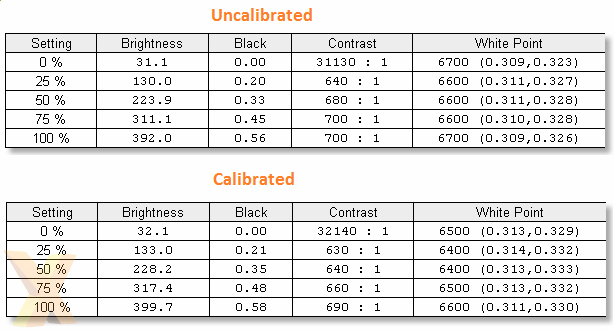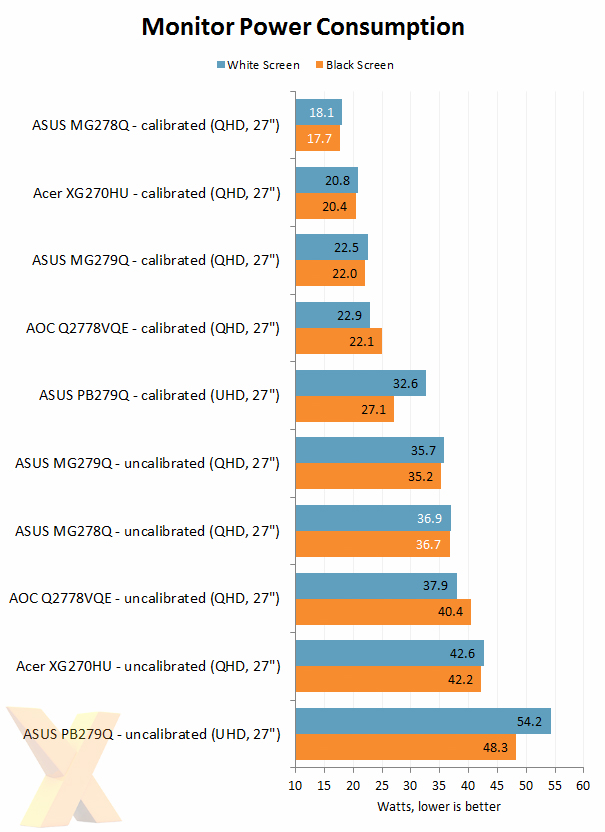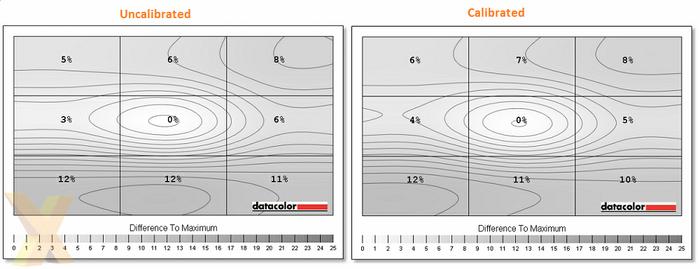Performance - Part II
Brightness and contrast
An average result close to 700:1 represents a top-tier quality TN-panel, and it's also nice to see that the default white point is very close to the LCD optimum of 6,500K. Calibration brings the Asus MG278Q closer to 6,500K at the expense of a slightly degraded contrast ratio.

Brightness uniformity tends to be stronger on TN panels compared to IPS, and this is shown by the MG278Q which had a maximum variance of 12 per cent, compared to 15 per cent for the IPS MG279Q.
Input latency
A claim of a 1ms response time with Overdrive isn't far off the mark, too. Our lag tester, which cannot make use of Overdrive, noted a total input latency result of 3.1 milliseconds at the top of the panel, 10.7 milliseconds in the centre and 19.9 milliseconds at the bottom - we always note the middle reading for consistency. The MG278Q does significantly better than the IPS MG279Q and rival FreeSync monitor, the Acer XG270HU.

Power consumption
With an eye-baking factory brightness of 90 per cent the out-of-the-box power consumption of 37W is much higher than it need be. After calibration to 120 nits, approximately 23 per cent brightness control, power consumption is almost halved and is about 3W less than monitors of similar specifications.











